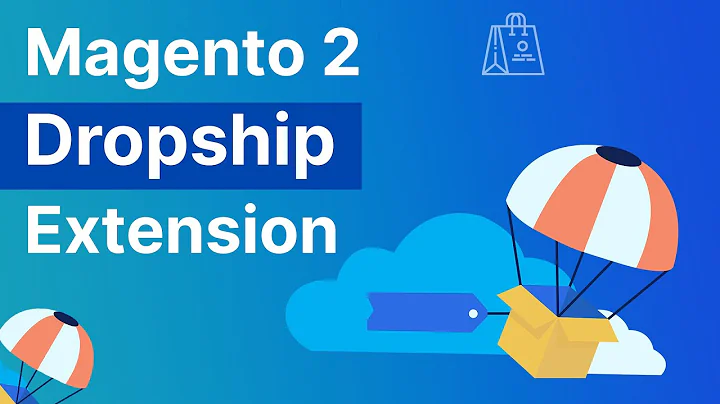Maximize Profit Margins: Effective Product Pricing Strategies
Table of Contents:
- Introduction
- Importance of Product Pricing and Margins
- Determining the Cost of Goods
- Considering Advertising Expenses
- Aiming for Large Profit Margins
- Examples of Product Pricing
- Tips for Pricing Strategies
- Targeting Average Order Value
- Tricks to Increase Average Order Value
- Implementing Pricing and Margin Strategies
Article:
Introduction
Welcome to this article where we will discuss the crucial concepts of product pricing and margins. These two factors play a significant role in selecting products and conducting thorough product research. Before we dive into the details, let me take a moment to welcome all the first-time readers of Ecommerce Empire Builders. We release new content every week, so make sure to hit the like button, subscribe, and turn on the notification bell to stay updated. Don't forget to drop a comment below for a chance to win $50 directly to your PayPal account.
Importance of Product Pricing and Margins
Product pricing and margins are immensely important in the world of ecommerce. Determining the right price for your products involves carefully considering the cost of goods and advertising expenses while leaving enough room for profit. Setting the right profit margin is vital for the success of your business. If your profit margins are too small, you will face challenges and may even fail. For example, if you source a product for $5 and try to sell it for just $10, it will be difficult to generate profits considering the substantial cost of advertising and customer acquisition. It is crucial to aim for large profit margins, especially during the product research phase.
Determining the Cost of Goods
When sourcing products, it is important to consider the cost of goods. If you purchase a product for $5, you should aim to sell it for at least $30 or more to ensure substantial profit margins. While the exact price does not have to be an exact multiplier, thinking in terms of substantial profit margins is crucial. Let's explore an example from a site where a product is sold for $29.95 with an additional $3.95 shipping fee, resulting in a total price of around $33.90. This product costs around $6.97, allowing for a large profit margin.
Considering Advertising Expenses
For beginners in the dropshipping business, it is advisable to avoid selling products for under $10 as it often yields minimal profits. During the initial stages, it is recommended to charge higher prices to ensure profitability. Another pricing strategy that people often overlook is pricing the products at prices ending in 95 cents, 97 cents, or 99 cents. This slight psychological difference can have a significant impact on customer perception and purchase behavior.
Aiming for Large Profit Margins
To have a larger profit margin and a higher budget for advertising and customer acquisition, it is recommended to target an average order value of at least $50 or more. By adhering to this guideline, you will have more room for profitability compared to lower-priced items. Offering free shipping for orders over $50 incentivizes customers to spend more, increasing the average order value. Implementing products with multiple price points, including cheaper and more expensive options, allows customers to choose products that align with their preferences, thereby increasing the average order value.
Examples of Product Pricing
Let's take a close look at the impact of pricing on profit margins using examples. By selling a product for $50, you can generate more revenue and be more profitable compared to lower-priced items. The higher the selling price, the more margin and profits you potentially have.
Tips for Pricing Strategies
When devising pricing strategies, it is crucial to consider certain factors. Firstly, avoiding round numbers and using prices that end in 95 cents, 97 cents, or 99 cents can have a psychological impact on customers and increase purchase behavior. Secondly, offering free shipping on orders over $50 is a proven strategy to increase the average order value.
Targeting Average Order Value
By targeting an average order value of $50 or higher, you can allocate more funds towards advertising and customer acquisition, resulting in increased profitability. Charging higher prices and offering upsells and cross-sales during the checkout process can also boost the average order value further. Additionally, introducing monthly subscription offers can increase both the average order value and the lifetime value of your customers.
Tricks to Increase Average Order Value
To achieve the desired average order value, offering free shipping for orders over $50 works effectively. Another trick is to have products with multiple price points, allowing customers to choose products that align with their preferences. Implementing upsells and downsells during the checkout process can also encourage customers to add more items to their cart, boosting the average order value.
Implementing Pricing and Margin Strategies
During the product research phase, it is important to implement the pricing and margin strategies discussed in this article. By setting a strong foundation with profit margins of at least 60% or more, you will be well-positioned for success. Prioritizing these aspects from the beginning is easier than trying to fix them later. By following these guidelines and incorporating effective pricing and margin strategies, you can maximize profits and create a successful ecommerce business.
Pros:
- Emphasizes the importance of product pricing and margins
- Provides practical tips and examples for pricing strategies
- Offers tricks to increase average order value
- Discussed the significance of implementing pricing and margin strategies from the beginning
Cons:
- Could provide more detailed examples of pricing strategies in different scenarios
Highlights:
- The crucial concepts of product pricing and margins
- Determining the cost of goods and considering advertising expenses
- Aiming for large profit margins during product research
- Examples and tips for pricing strategies
- Targeting average order value and tricks to increase it
- Implementing pricing and margin strategies for success
FAQ:
Q: Why are product pricing and margins important in ecommerce?
A: Product pricing and margins play a significant role in the profitability of an ecommerce business. Determining the right price for products ensures that advertising expenses are covered, and there is room for profit. Large profit margins contribute to the overall success of the business.
Q: How can I determine the cost of goods for my products?
A: The cost of goods can be determined by considering the purchase price of the product from suppliers, along with any additional shipping or handling fees. This cost should be factored into the pricing strategy to ensure profitability.
Q: What are some pricing strategies to increase average order value?
A: Implementing prices that end in 95 cents, offering free shipping for orders over a certain value, and providing upsells and cross-sales during the checkout process are effective strategies to increase the average order value. Adding monthly subscription offers can also boost both the average order value and the lifetime value of customers.
Q: Why is it important to prioritize pricing and margin strategies from the beginning?
A: Setting the right pricing structure from the beginning is easier than trying to fix it later on. By implementing effective pricing and margin strategies from the start, you establish a strong foundation for your business and increase the chances of long-term success.



















